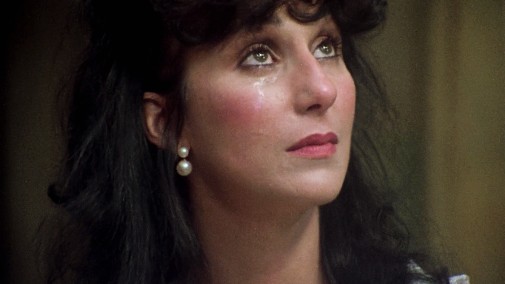
What are you doing for Mother’s Day? The Criterion Channel marks the occasion with a collection inspired by Michael Koresky's Films of Endearment. In his book, the film critic details how he and his mother revisited the 1980s movies that she introduced to him, igniting a passion for cinema. The resulting selection comprises a varied offering of that decade's prestige cinema starring an array of acclaimed actresses, from Ellen Burstyn to Meryl Streep. One of the collection's most exciting titles is Come Back to the 5 & Dime Jimmy Dean, Jimmy Dean, an underrated Robert Altman effort that gave Cher her first serious big-screen role. If not for this flick, her ascendance to movie stardom might have never happened, much less a Best Actress Oscar victory.
As one looks back at the 1982 play adaptation, the beginning of Cher's path towards acting gold is evident. Indeed, she almost got an Academy Award nomination right then and there…
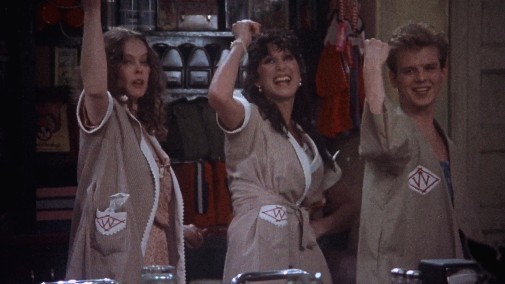
Based on Ed Graczky's 1976 homonymous play, Come Back to the 5 & Dime, Jimmy Dean, Jimmy Dean is set inside a small Texan Woolworths five-and-dime store. The place, which is only 62 miles away from where Giant was shot, serves as a meeting spot for the Disciples of James Dean, an all-female fan club that reunites in 1975 to honor the twentieth anniversary of the actor's death. Between the present day and a flashback to 1955, we get to know the club's members as they uncover their secrets in a night running wild with booze. Specifically, we get to know three women.
Played by Sandy Dennis, Mona's warped fandom has taken her to a place of desperation, hiding a son she claims was fathered by Dean himself. Then there's Karen Black's Joanne, a trans woman whose personal journey is portrayed with a sensitivity that feels ahead of its time for 1982. Finally, Cher is Sissy, the most grounded of these women. In other words, it's the least showy part, though no less complex than her sisters in terms of psychology, juicy monologues, and shattered multidimensionality. Each feels confined and liberated in their way, tied to the past while also running from it.
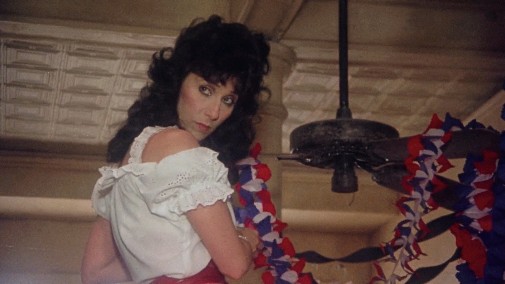
The film thus works as a showcase for Altman's ability to collaborate with actors and shoot limited spaces, finding infinite strategies to capture and contrast the store and its women. Come Back to the 5 & Dime, Jimmy Dean, Jimmy Dean, is also a monument to the cast, using these famous performers in ways no other film ever tried, before or since. Of its central trio, Cher's the first to appear on-screen, casually walking into the store like a boho-chic Earth goddess. There's an air of studied casualness to her demeanor, perchance a remnant of her on-stage approach to the same role.
However, her vocal cadence and the rhythm of gestures reveal a deeper weariness, something down to the bone - something that's grown with time like an ineffable sign of age. Altman wastes no time before juxtaposing this older Sissy with her twenty-years younger counterpart. Walking into the store once more, this time in rainy 1955, Cher's Sissy looks the same, wearing the same costume she dons in middle age. Maybe there's less rouge reddening her cheeks. Maybe not. Still, her step is different, suggesting a general enthusiasm for life that has dried up in the interim years.
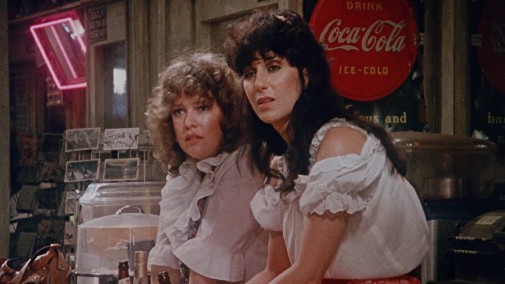
Even beyond the unchanged costume, the ghost of youth haunts Sissy. Such character details live in Cher's variations of both humor and energy, her reaction to old friends, and their tokens of the past. At times, it feels like Sissy is playacting her enthusiasm a little bit, exaggerating emotion in order to force herself into genuine feeling. It's a risky gambit on Cher's part, for the approach could read as over-deliberate, mayhap over-technical when compared to Dennis's externalized implosions and Black's sense of innate fragmentation.
Thankfully, Cher thrives in making bold choices look instinctual, erasing any signs of forcefulness until everything she does on-screen looks effortless. Such powers aren't beneficial for winning awards, though, since so much value is put on the performer's self-conscious extenuations. Nevertheless, they're vital to the songstress's success as a dramatic actress. They also define her presence as that of an old-school movie star. She can walk into a movie, captivate the camera, and magnetize the audience's gaze without breaking a sweat.
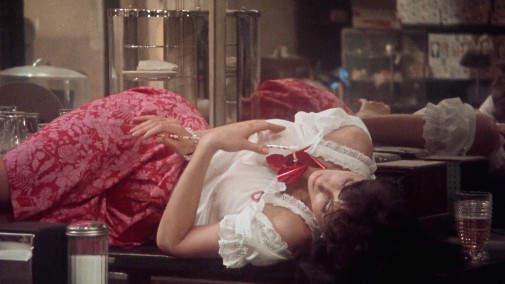
That doesn't mean Sissy herself is straightforward. Though she's a well of sisterly solidarity throughout, it doesn't come naturally to her. It might have when she was young, but the older Sissy noticeably holds back from automatic harshness. Moreover, it doesn't always work. At times, it's impossible to hide her judgment, so she takes herself out of the scene, crackling away in a cloud of comedic frustration. Then, walking back into the movie, she's all dipsomaniac deadpan, ready to accept Joanne's revelations with good humor and only a quiet moment of reassessment.
Such moments are aplenty in a characterization that, being so much less showy than Dennis or Black's work, sometimes seems in danger of being overshadowed. And yet, Cher shines through reactivity, projecting an Ava Gardner-like image while approaching the role in Thelma Ritter fashion. Notice how she listens to Mona's recounting of her encounter with Dean, bored and slightly critical in that way one is when being presented with an oft-repeated lie. Consider how she shows that Sissy knows the truth about the kid's parentage long before anyone speaks it.
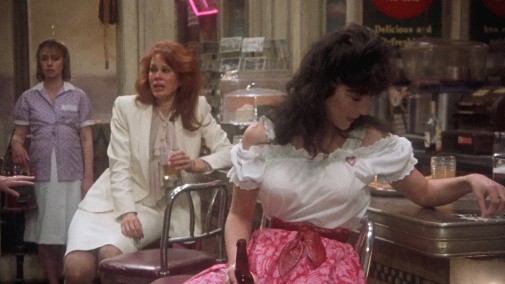
It's all in the occasional glance, so full of sorrow for her sisters, how she dances her way around conversations. Notice how actress and character dispel awkward inquiries about faith with a pointed joke, a naked diversion that's a prelude to some harsher words. Sissy knows how to tell truth from untruth but still tries to delude herself, a feeble attempt to escape the disappointments that have long defined who she is. When she breaks, it's a beautiful crucible of pity and compassion coming from all directions, all at once. It's only natural that such a scene devolves into manic giggles leading to more rueful revelations and some nostalgic dances, too.
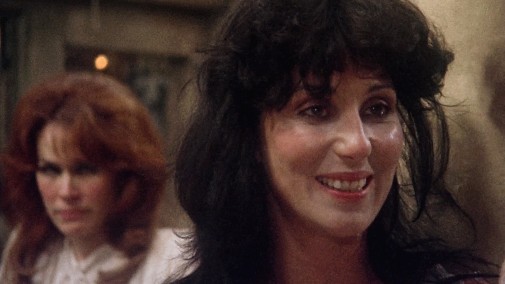
Though Sissy is arguably a leading role, Cher campaigned for Best Supporting Actress prizes. She was nominated for the Golden Globe and LAFCA awards in that category. However, when it came time for Oscar honors, Cher was left out of the final lineup. Instead, AMPAS chose Glenn Close in The World According to Garp, Teri Garr and Jessica Lange in Tootsie, Kim Stanley in Frances, and Lesley Ann Warren in Victor/Victoria. In the end, Lange won what many consider a consolation victory since she was bound to lose Best Actress to Meryl Streep in Sophie's Choice. I think she should have won for Frances, but that's another matter altogether. As for Cher, she didn't have to wait long for her first Oscar nod. It happened just the following year, in Best Supporting Actress for Silkwood. She later won Best Actress for Moonstruck in 1987.
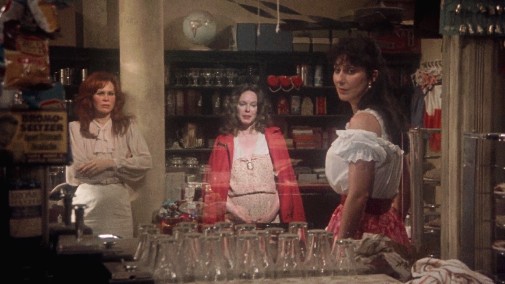
Beyond streaming on the Criterion Channel, you can find Come Back to the 5 & Dime, Jimmy Dean, Jimmy Dean on Apple iTunes, available to rent or purchase.